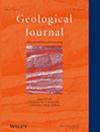Late Mesozoic Tectonic Evolution of the Baiyun Sag, Northern South China Sea Margin
Abstract
The northern South China Sea (SCS) divergent margin developed on a heterogeneous crust that inherited the structures of the Mesozoic convergent margin. However, in the past, studies focused mainly on Cenozoic structures and neglected Mesozoic basement structures. On the basis of the latest high–resolution 3D seismic volumes, we first identify the fault features and evidence in the granite basement. We then identify three sets of Mesozoic fault systems in the northern SCS and discuss their properties and genesis. The NE–trending thrust system (Seismic Reflection 1), formed by forward compression, corresponds to the NW-ward subduction of the palaeo-Pacific plate; the NE–trending extensional system (Seismic Reflection 2 and small residual half-grabens) is related to post-orogenic extension caused by slab rollback and retreat of the palaeo-Pacific plate; and the NNE–trending thrust system (Seismic Reflection 3) formed by a transpressional effect related to the palaeo-Pacific plate and the Eurasian plate changed from the long-term NW-ward orthogonal convergence to a NNW-ward oblique convergence. Finally, by combining previous results on the regional tectonic evolution of onshore and offshore South China, we establish a model for the late Mesozoic evolution of the northern SCS from the Andean-type margins to the western Pacific-type margins.


 求助内容:
求助内容: 应助结果提醒方式:
应助结果提醒方式:


